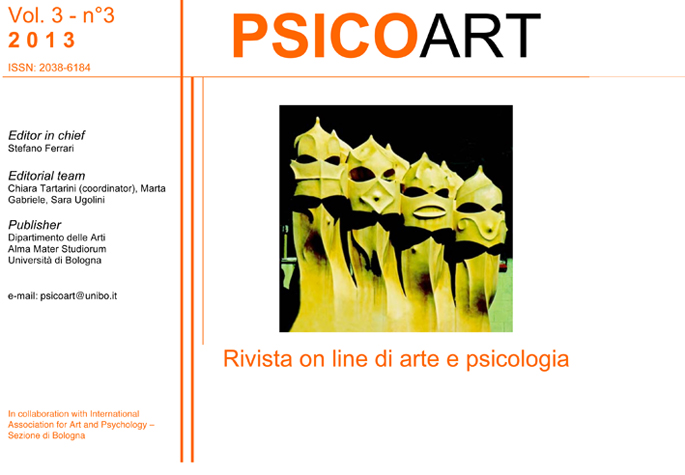Agalmatophilia. The love for the statues in the Ancient World: the Cnidian Aphrodite and the case of Pygmalion
DOI:
https://doi.org/10.6092/issn.2038-6184/3452Keywords:
Agalmatophilia, Sexuality, Cnidian Aphrodite, Pygmalion, Sex dollsAbstract
The sexual attraction to statues, also known as 'agalmatophilia', seems to be prevalent in the Ancient World: the case of the Cnidian Aphrodite is of particular interest. According to multiples ancient sources, this statue, made by Praxiteles was able to arouse the erotic desire in the observer. However, this case must be contextualised in the ancient Greece, where different powers were ascribed to the divinities and great importance was given to Mimesis. The literary case of Pygmalion, recorded by Ovid in the Metamorphoses, plays a key role in this context as well. Here, the power of poetry allows the achievement of a happy end through the transformation of the statue into a real woman. Hereof we underline the analogies between the sculpture moulded by Pygmalion and the doll, which allow us to perceive in this myth a sort of conceptual bridge towards a contemporary form of agalmatophilia, the one that employs sex dolls.
References
M. Bettini, Il ritratto dell'amante, Einaudi, Torino, 1992.
L. Bossi, De l'agalmatophilie, L'Échoppe, Paris 2012.
R. Capel Badino, Filostefano di Cirene. Testimonianze e frammenti, LED, Milano 2010.
V. Cilento, Pygmalion, ovvero la statua vivente, in Id., Pygmalion, Riccardo Ricciardi, Milano -Napoli 1972.
L. Durrel, Justine, trad. it. Einaudi, Torino 1982.
Filostrato, Vita di Apollonio di Tiana.
S. Ferrari, Lineamenti di una psicologia dell'arte. A partire da Freud, Clueb, Bologna 1999.
S. Freud, Il poeta e la fantasia (1907), in Id. Saggi sull'arte, la letteratura e il linguaggio, trad. it. Bollati Boringhieri, Torino 1969
S. Freud, Il perturbante (1919) in Id. Saggi sull'arte, la letteratura e il linguaggio, cit.
C. Franzoni, Tirannia dello sguardo. Corpo, gesto, espressione dell'arte greca, Einaudi, Torino 2006.
K. Gross, The dream of the moving statue, Pennsylvania State University Press, 2006.
G.L. Hersey, Falling in love with statues, The University of Chicago Press, Chicago 2009.
M. Manson, Le mythe de Pigmalion est-il un mythe de la poupée? In Colloque Présence d'Ovide – Atti del convegno, Paris, Les Belles Lettres, 1982.
C. Mitchell Havelock, The Aphrodite of Knidos and her successors. A historical review of the female nude in Greek Art, The University of Michigan Press, 1995.
R. Olmos, El amor del hombre con la estatua: de la Antigüedad a la Edad Media, in H. von Hilde Froning, T. Hölscher, H. Mielsch Kotinos – Festschrift für Erika Simon, von Zabern, Mainz/Rhein, 1992.
A. Però, La statua di Atena. Agalmatofilia nella “Cronaca” di Lindos, LED, Milano 2012.
Gaio Plinio Secondo, Nat. Hist., XXXVI, 21.
M. Pugliara, Il mirabile e l'artificio. Creature animate e semoventi nel mito e nella tecnica degli antichi, “L'erma” di Bretschneider, Roma 2003.
G. Rosati, Narciso e Pigmalione. Illusione e spettacolo nelle Metamorfosi di Ovidio, Sansoni, Firenze 1983.
A. Scobie, J. W. Taylor, Perversions ancient and modern: agalmatophilia, the statue syndrome, in “Journal of the history of the behavioral sciences”, 1975, vol. XI.
V. Stoichita, L'effetto Pigmalione, trad. it. Il Saggiatore, Milano 2006.
M. J. White, The Statue Syndrome: Perversion? Fantasy? Anecdote?, “Journal of Sex Research”, 1978, vol 14, n. 4.
Downloads
Published
How to Cite
Issue
Section
License
Copyright (c) 2013 Giulia Ferrari
Copyrights and publishing rights of all the texts on this journal belong to the respective authors without restrictions.
This journal is licensed under a Creative Commons Attribution 4.0 International License (full legal code).
See also our Open Access Policy.





